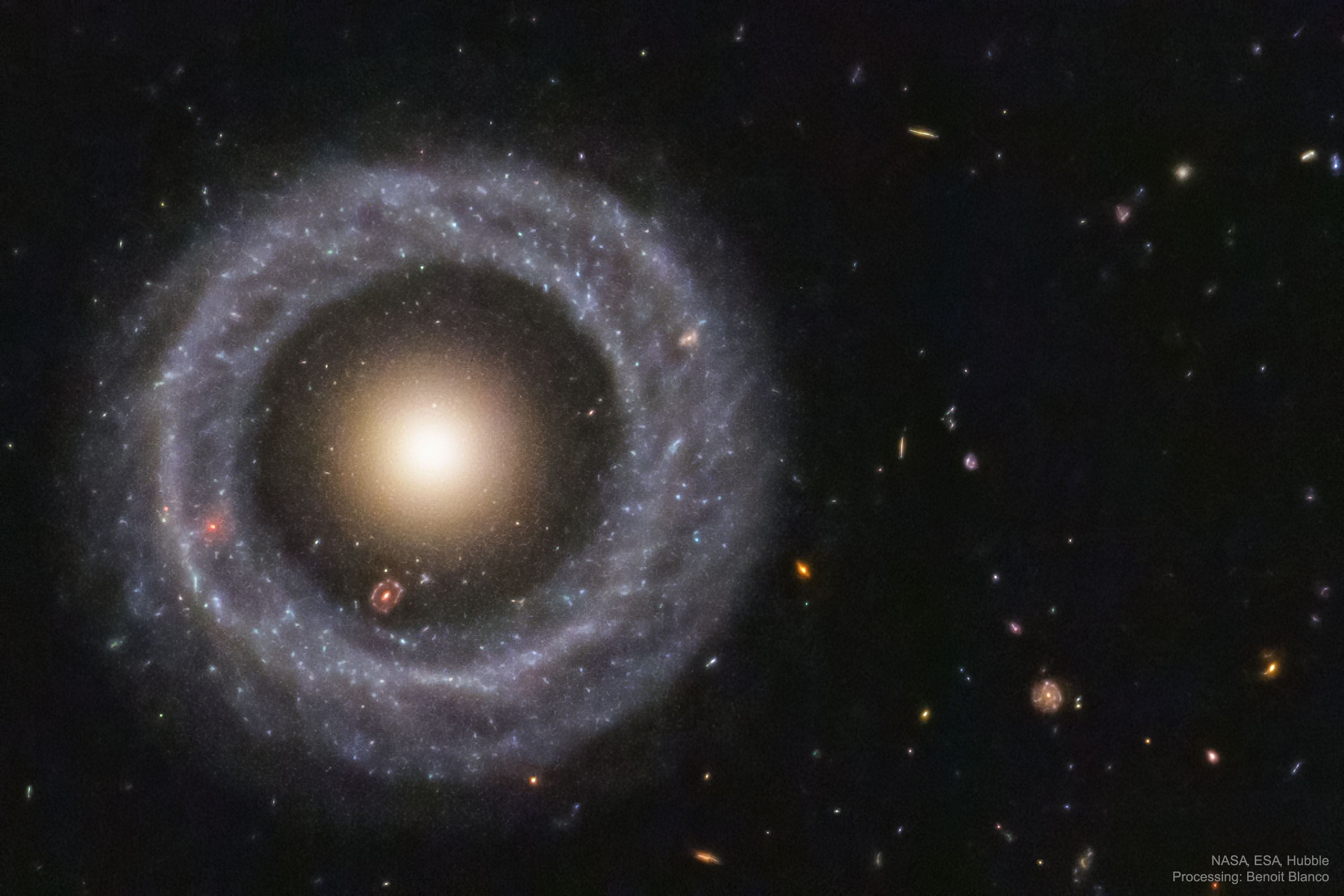
NASA and the European Space Agency have shared this beautiful and striking image of a most unusual galaxy. Hoag’s Object, as it is known, is an almost perfect ring galaxy with an elegant circular form, meaning it is classified as a “peculiar galaxy.” The image was captured using the Hubble Space Telescope.
One question astronomers had when observing this object was whether it was one galaxy or two. You can see the outer ring of younger blue stars is very distinct from the inner sphere of older, redder stars. And there seems to be a gap of nearly star-less space between the two. These facts make it seem like these are two separate galaxies.
However, the outer ring is around 120,000 light-years wide, which is around the same width as our galaxy, the Milky Way. The inner ring is 24,000 light-years across, which is around the same size as the inner core of our galaxy. This makes it seem like the object is one galaxy that somehow had a portion of stars from its interior removed.
The underlying question is how such a ring galaxy could have formed, and astronomers still don’t have an answer to that. A few other ring galaxies have been found through the years, but none as strikingly perfect as Hoag’s Object.
One possibility, according to astrophysics blogger Graham Doskoch, is that the object began life as a single barred galaxy, but that the bar was unstable. Over time, the instability destroyed the inner structure of the galaxy. The problem with this theory is that it would mean the core of the object would be disk-shaped, but that’s not what we see — the core is spherical.
Another possibility is what is called a “major accretion event.” If two galaxies passed close to each other but not close enough to collide or merge, then a large amount of matter could have passed from one galaxy to the other. But if this had happened to Hoag’s Object, we would expect to see indicators like tails of matter stretching out in one direction, which we don’t observe here. It could be that the event happened billions of years ago, so such indicators have eroded over time, leaving only the nearly perfect ring we see today.



